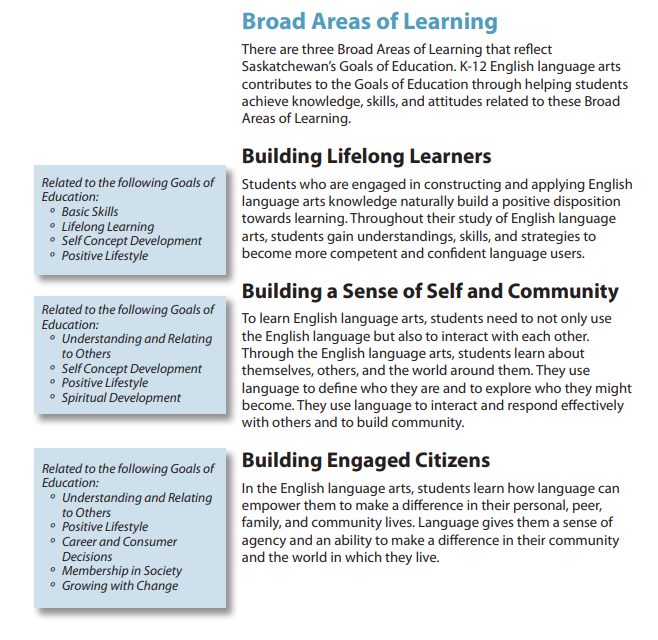For the grace of this post, I have decided to incorporate the broad areas of learning in connection to digital literacy. Throughout my university career, we studied the broad areas of learning multiple times. Just a few short years into my career, I saw them resurface. On the very front of our report cards, we comment and rate something called FASA (Factors Affecting Student Achievement). The broad areas are: building lifelong learners, building a sense of self and community, and finally building engaged citizens. Check out this link to find it, but also check out this quick snapshot from the Saskatchewan Curriculum.

If you have been paying attention at all to my posts since the beginning of class, you will know that there are one million connections we can make to these learning areas and digital literacy. You can check out my post here about my connections to the curriculum and Ribble’s nine elements of digital citizenship. I think that digital literacy and digital citizenship go hand in hand when working with young adults and students and developing an understanding of their presence online. I am going to dive into each of the broad areas of learning and connect the curriculum, with supporting evidence from outside, reliable sources!
First off, building lifelong learners literally speaks to digital literacy. Students need to develop the skills and understandings of how to learn with valuable and relevant information. Most of the information we gather as human beings comes in a digital sense. This comes first, with teaching students to look at the world (with a focus online) with a critical pair of glasses. It is getting harder and harder to identity fake news, and as we see here, students are not going to be born with a sixth sense of verifying fake news, it needs to be taught: “we need to be able to apply web-specific knowledge, such as understanding the implicit biases of various news sites or knowing which fact-checking sites are trustworthy.” (Couros, Hildebradt 2018). It is not going to “pop out” like it has for some of us that have grown with the technology, information and misinformation is going to get harder and harder to differentiate, and developing those lifelong learning skills will (hopefully) keep them from believing everything they see, read and hear on the internet.
Second of all, we want students to build a sense of self and community. I personally, can’t imagine a better way to teach a group of 28 sixth graders this than using an online forum and world, which is what I plan on doing next year. Early in the year, we have to develop a solid understanding of where, why, what and how we can get information to share with each other. How can I be sure that this is going to happen? Using the four moves highlighted on this website allows for students to make sure that their information is valid and worthwhile to share with others! Even creating a visual for the classroom would allow for students to develop autonomy in their own critical thinking skills for themselves and their community!
Finally, we are looking to build engaged citizen. Engaged citizens are more likely to share real information, having meaningful ideas and perspectives to share and contribute to a more positive society. Engaged citizens will recognize fake news, fake accounts and attempt to shut these ideas down. Engaged citizens are more likely to overwhelm your feed with REAL news and this is what we want. We want people and students to be active on social media, because as we have learned the more fluent students (or people in general) are with any resource, the more effective and intelligent they will be about their choices regarding the resource. Education and exposure is key.
Students need to create and collaborate in safe, effective online environments that provide them with the most learning and development of critical thinking skills.